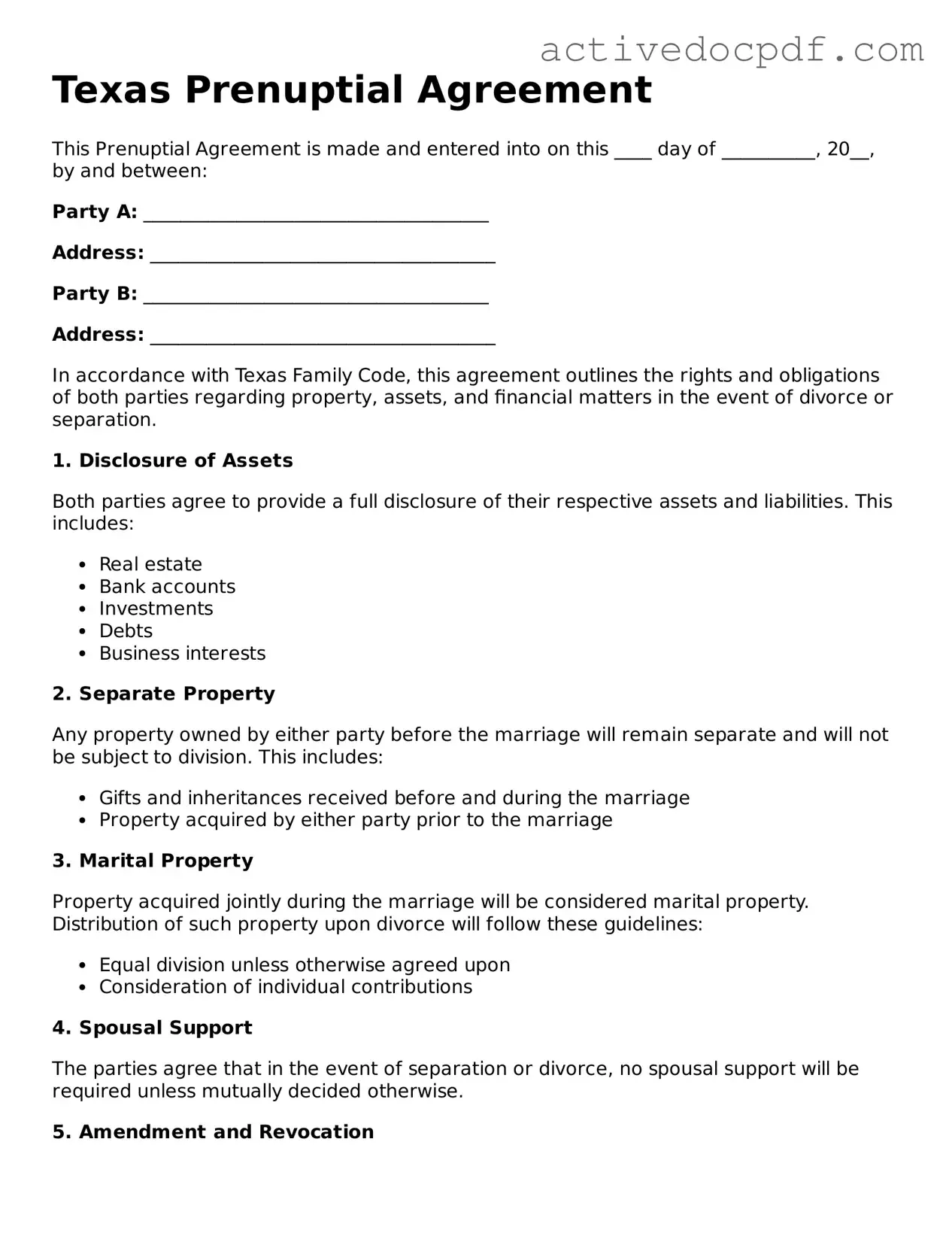Legal Prenuptial Agreement Document for Texas State
A Texas Prenuptial Agreement form is a legal document that outlines the rights and responsibilities of each spouse regarding property and financial matters in the event of a divorce or separation. This agreement serves to protect individual assets and clarify expectations, promoting transparency before marriage. Understanding the nuances of this form can help couples make informed decisions about their financial futures.
Edit Form Online
